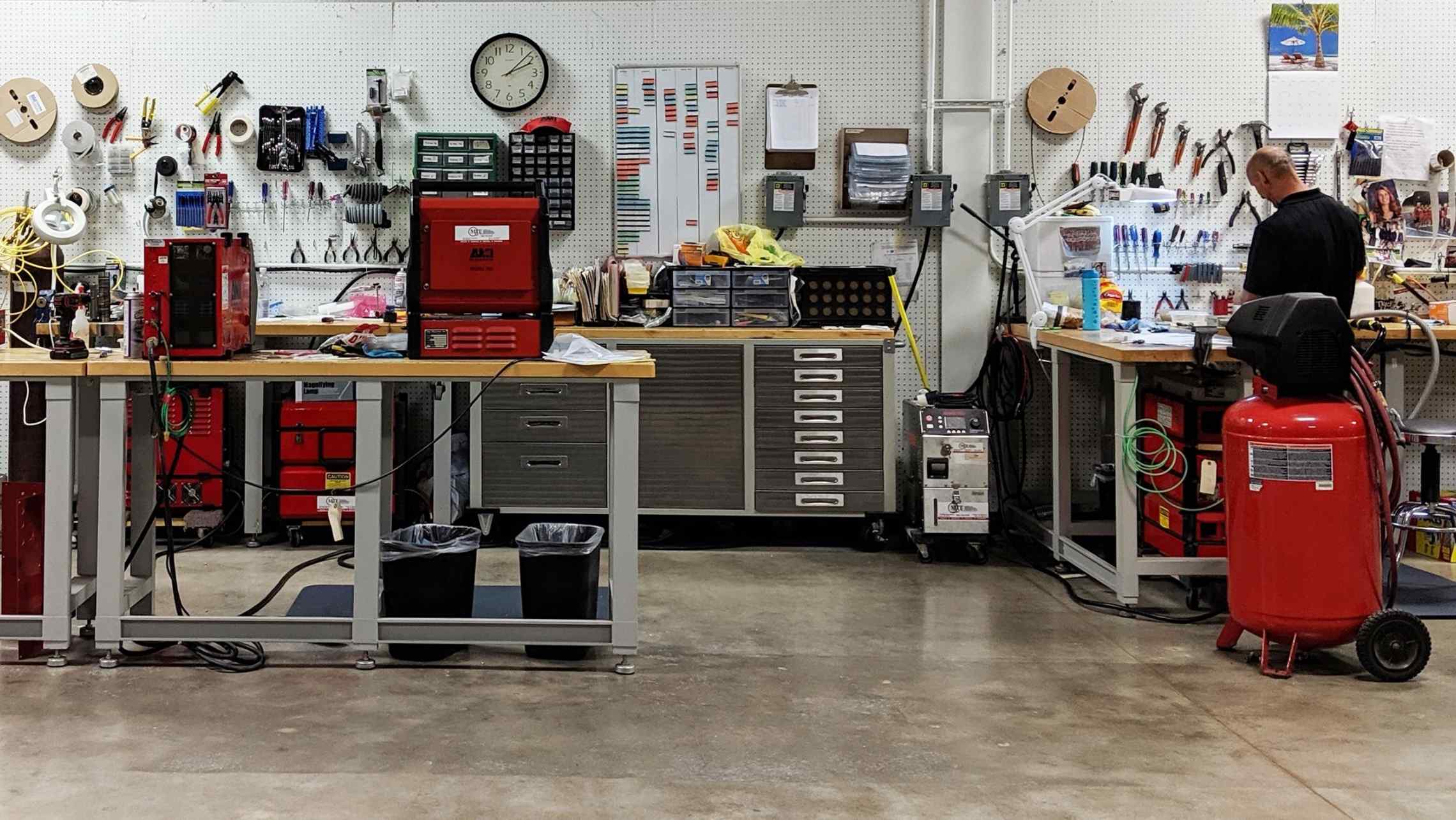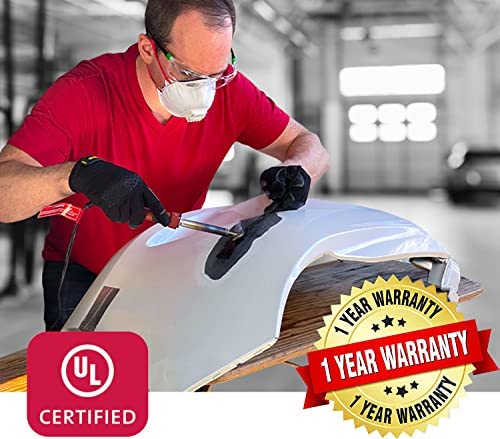Usual Welding Repair Service Issues and How to Address Them Efficiently
Welding repair work frequently experience a series of issues that can endanger the stability of the last product. Common problems consist of poor infiltration, porosity, and imbalance, among others. Each flaw offers unique obstacles that call for details techniques for resolution. Recognizing these concerns is essential for welders aiming to enhance their outcomes and skills. This conversation will certainly check out these common welding repair service issues and reliable approaches to address them.
Poor Penetration
Inadequate infiltration occurs when the weld steel stops working to totally fuse with the base product, leading to weak joints and prospective structural failings. This problem often stems from not enough heat input, inaccurate electrode angle, or incorrect welding rate. Welders might experience insufficient infiltration because of a mistake of the needed criteria for a particular product density or type. Additionally, contamination on the base product's surface can impede effective bonding, worsening the trouble. To attend to insufficient penetration, welders ought to guarantee proper setups on their equipment and preserve a clean job surface. Normal assessment of welds is advised to determine any shortages early, allowing for prompt corrections and the prevention of compromised architectural honesty in bonded assemblies.
Porosity
Porosity is an usual problem in bonded joints that manifests as little gas bubbles entraped within the weld metal. This defect can endanger the stability of the weld, resulting in reduced stamina and prospective failing under stress and anxiety. Montana Mobile Welding and Repair Belgrade Fabrication. Porosity usually arises from contamination, moisture, or improper welding techniques, which enable gases to escape into the liquified weld swimming pool. To resolve porosity, welders need to ensure proper surface preparation, maintain a clean functioning environment, and utilize suitable welding specifications. Furthermore, selecting the ideal filler product and protecting gas can alleviate gas entrapment. Regular assessment and testing of welds can assist recognize porosity early, guaranteeing prompt restorative actions are taken, therefore protecting the top quality and dependability of the bonded framework
Imbalance
Misalignment in welding can arise from numerous elements, consisting of inappropriate arrangement and thermal expansion. Comprehending the source is crucial for effective resolution. Numerous correction methods are offered to straighten components and guarantee architectural stability.
Reasons for Misalignment
Welding misalignment typically comes from a range of underlying concerns that can compromise architectural honesty. One primary cause is inappropriate fit-up of elements prior to welding, which can bring about spaces and uneven surfaces. Variations in thermal development during the welding procedure can additionally result in distortion, particularly if the products being signed up with have different coefficients of growth. In addition, insufficient clamping and fixturing may fail to hold components securely in location, causing movement throughout welding. Improperly kept equipment, consisting of welding devices and devices, may present inconsistencies in the weld bead, further contributing to misalignment. Finally, operator error, coming from not enough training or experience, can likewise play a substantial function in creating misaligned welds.
Correction Techniques Readily Available
Attending to misalignment properly calls for a mix of corrective strategies tailored to the certain concerns handy. One usual technique is making use of fixtures or jigs to hold parts in the correct placement during welding, guaranteeing constant positioning. In addition, preheating the products can help in reducing distortion and boost fit-up. For considerable imbalance, mechanical realignment methods, such as utilizing hydraulic jacks or clamps, can be utilized to remedy the position prior to welding. Post-weld warmth treatment might additionally be needed to ease anxieties brought on by imbalance. Cautious inspection and adjustment during the configuration phase can protect against misalignment problems from ending up being significant troubles, promoting a smoother welding process and improving general architectural stability.
Distortion
Distortion is a typical difficulty in welding that can occur from numerous variables, consisting of unequal cooling and heating. Recognizing the sources of distortion is vital for applying effective avoidance techniques. Addressing this concern not only boosts structural stability but additionally boosts the general high quality of the weld.
Reasons for Distortion
When based on the extreme warmth of welding, products commonly undertake changes that can lead to distortion. This phenomenon mostly arises from thermal expansion and contraction throughout the welding process. As the weld area warms up, the material expands; upon air conditioning, it gets, which can develop internal anxieties. On top of that, uneven home heating across a work surface can aggravate these stresses, resulting in warping or bending. The kind of material likewise plays a significant function; metals with varying thermal conductivity and coefficients of growth may react in different ways, leading to unforeseeable distortions. check these guys out Bad joint style and poor fixturing can contribute to imbalance throughout welding, boosting the possibility of distortion. Understanding these reasons is essential for efficient welding fixing and avoidance strategies.
Prevention Techniques
Reliable avoidance strategies for distortion during welding emphasis on regulating heat input and making certain proper joint design. Maintaining a regular warmth input assists to minimize thermal expansion and contraction, which can cause distortion. Using methods such as pre-heating the work surface can likewise decrease the temperature gradient, promoting uniform home heating. In addition, picking ideal joint layouts, such as T-joints or lap joints, can improve security and decrease stress and anxiety focus. Implementing correct fixturing to protect the work surfaces in position better help in preserving placement during the welding process. Staggered welding series can distribute warmth extra equally, protecting against localized distortion. By applying these strategies, welders can substantially reduce the chance of distortion and improve the total top quality of their welds.
Cracking
Splitting is an usual concern run into in welding repairs, usually resulting from various factors such as inappropriate air conditioning prices, material selection, or poor joint prep work. The occurrence of cracks can significantly jeopardize the integrity of the weld, resulting in prospective failings during procedure. To address this concern, welders have to first examine the source, guaranteeing that materials work and properly picked for the certain application. Furthermore, controlling the air conditioning price throughout the welding procedure is necessary; fast air conditioning can induce stress and anxiety and bring about fracturing. Correct joint visit the website layout and preparation likewise add to reducing the threat. Carrying out these approaches can enhance weld high quality and toughness, inevitably reducing the chance of breaking in ended up weldments.

Insufficient Combination
A considerable issue in welding fixings is insufficient combination, which occurs when the weld steel does not properly bond with the base material or previous weld passes - Belgrade Fabrication. This defect can cause weak points in the joint, potentially compromising the stability of the welded structure. Aspects contributing to incomplete combination consist of insufficient warmth input, incorrect welding strategy, and contamination of the surfaces being signed up with. To address this concern properly, welders must guarantee appropriate pre-weld cleaning and surface area prep work, along with readjust their welding specifications to achieve ample penetration and blend. Normal evaluation during the welding procedure can additionally aid determine insufficient blend early, enabling for prompt rehabilitative measures to boost the overall top quality of the weld
Overheating
While welding repairs can improve structural stability, overheating presents a significant obstacle that can result in product deterioration. Excessive warmth during welding can change the mechanical homes of metals, causing minimized toughness, enhanced brittleness, and bending. This phenomenon is especially crucial in high-stress applications where structural integrity is vital. Recognizing overheating can entail visual examinations for discoloration or distortion, in addition to checking temperature during the welding process. To alleviate the threats connected with overheating, welders must use ideal techniques, such as regulating warmth input, changing travel rate, and using ideal look at these guys filler materials. Additionally, implementing pre- and post-weld warm therapies can assist bring back product homes and enhance the total high quality of the repair, guaranteeing long-lasting efficiency and safety.
Often Asked Questions
What Are the Usual Indications of a Welding Defect?

Just How Can I Evaluate My Welds for Quality?
To check welds for quality, one can make use of visual assessments, ultrasonic screening, and radiographic approaches. Each method assures structural honesty, recognizes problems, and validates adherence to specified criteria, ultimately improving the dependability of the bonded joints.
What Security Precautions Should I Take While Welding?
When welding, one ought to focus on safety and security by wearing ideal personal safety devices, making certain correct ventilation, securing combustible materials away, maintaining a tidy workspace, and being aware of environments to stop crashes and injuries.
Can I Fix a Weld Without Remodeling the Entire Joint?
Repairing a weld without redoing the whole joint is feasible, depending upon the damages (Montana Mobile Welding and Repair Fabrication). Methods such as grinding, including filler material, or using a welding process can effectively address particular flaws while maintaining the surrounding structure
What Equipment Are Necessary for Reliable Welding Fixes?
Important tools for reliable welding repair work include a welding machine, wire brush, mill, safety equipment, clamps, and filler products. Each device plays an essential role in making sure top quality and safety and security throughout the repair procedure. Porosity commonly arises from contamination, wetness, or inappropriate welding methods, which enable gases to leave right into the liquified weld pool. Improperly maintained tools, including welding makers and tools, may present inconsistencies in the weld bead, additional adding to misalignment. When subjected to the intense warm of welding, products usually undertake changes that can lead to distortion. Breaking is an usual concern run into in welding repair work, typically resulting from various variables such as improper air conditioning prices, material choice, or poor joint prep work. A substantial concern in welding fixings is incomplete blend, which takes place when the weld steel does not adequately bond with the base material or previous weld passes.